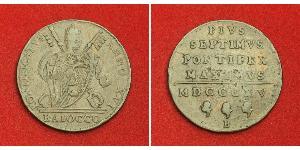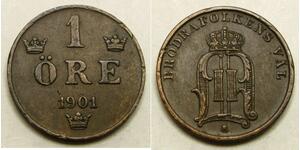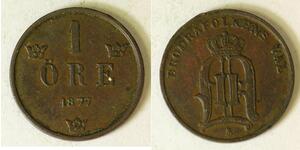(售价 $33.0)
1575, Netherlands. Copper "Failed Peace Negotiations at Breda" Medal. Scarce!
Mint Year: 1575 Mint Place: Dordrcht Condition: A nice VF+ Reference: Dugniolle 2647, van Loon I 210. R! Denomination: Small Medal (Jetton) - Failed peace negotiations at the Conference of Breda during 1575 (initiated by Emperor Maximilian II). Material: Copper Diameter: 29mm Weight: 6.72gm
Obverse: Dutch lion, brandishing sword and holding shield inside fenced Dutch garden. Legend: . * . SECVRIVS . BELLVM . PACE . DVBLA ("War is safer than an uncertain peace!")
Reverse: Dutch hat of freedom (vrijheidshoed), splitting date (15-75) above inscription in two lines ("It is a golden freedom..."). Legend: * : CVIVS . MODERATVR . HABENAS . RATIO : ("...whose speech carries the reins!") . 15 * 75
The peace negotiations began on March 2, 1575 in Breda, initiated through Emperor Maximilian II, but failed du to religious reasons between him and the Dutch provinces.
The Dutch Republic-officially known as the Republic of the Seven United Netherlands (Republiek der Zeven Verenigde Nederlanden), the Republic of the United Netherlands, or the Republic of the Seven United Provinces was a republic in Europe existing from 1581 to 1795, preceding the Batavian Republic, the United Kingdom of the Netherlands and ultimately the modern Kingdom of the Netherlands. Alternative names include the United Provinces , Federated Dutch Provinces (Foederatae Belgii Provinciae), and Dutch Federation (Belgica Foederata).
Until the 16th century, the Low Countries-roughly now corresponding to Netherlands, Belgium and Luxembourg-consisted of a number of duchies, counties and bishoprics, most of which were under the supremacy of the Holy Roman Empire.
Most of the Low Countries had come under the rule of the House of Burgundy and subsequently the House of Habsburg. In 1549 Holy Roman Emperor Charles V issued the Pragmatic Sanction, which further unified the Seventeen Provinces under his rule. Charles was succeeded by his son, King Philip II of Spain. In 1568 the Netherlands, led by William I of Orange, revolted against Philip II because of high taxes, persecution of Protestants by the government, and Philip's efforts to modernize and centralize the devolved-medieval government structures of the provinces. This was the start of the Eighty Years' War.
In 1579 a number of the northern provinces of the Netherlands signed the Union of Utrecht, in which they promised to support each other in their defence against the Spanish army. This was followed in 1581 by the Act of Abjuration, the declaration of independence of the provinces from Philip II.
In 1582 the United Provinces invited Francis, Duke of Anjou to lead them; but after a failed attempt to take Antwerp in 1583, the duke left the Netherlands again. After the assassination of William of Orange (10 July 1584), both Henry III of France and Elizabeth I of England declined the offer of sovereignty. However, the latter agreed to turn the United Provinces into a protectorate of England (Treaty of Nonsuch, 1585), and sent the Earl of Leicester as governor-general. This was unsuccessful and in 1588 the provinces became a republic. The Union of Utrecht is regarded as the foundation of the Republic of the Seven United Provinces, which was not recognized by the Spanish Empire until the Peace of Westphalia in 1648.
The Republic of the United Provinces lasted until French revolutionary forces invaded in 1795 and set up a French puppet state, called the Batavian Republic which would be replaced by the Napoleonic Kingdom of Holland.
The Netherlands regained independence from France in 1813. In the Anglo-Dutch Treaty of 1814 the names "United Provinces of the Netherlands" and "United Netherlands" were used. In 1815 it was rejoined with Austrian Netherlands, Luxembourg and Liege (the 'Southern provinces') to become the Kingdom of the Netherlands, informally known as the Kingdom of the United Netherlands, to create a strong buffer state north of France. After Belgium and Luxembourg became independent, the state became unequivocally known as the Kingdom of the Netherlands, as it remains today.
1 Ore 瑞典 青铜
本组有 3 钱币 / 2 售价
⇑
40 coin descriptions were improved from 2025-05-07 to 2025-05-14
其中一个是:
1 Teston / 30 Baiocco 教皇国 (754 - 1870) 銀
本组有


















-300-150-tJZbmZgtOw0AAAF2zmggEvpX.jpg)





